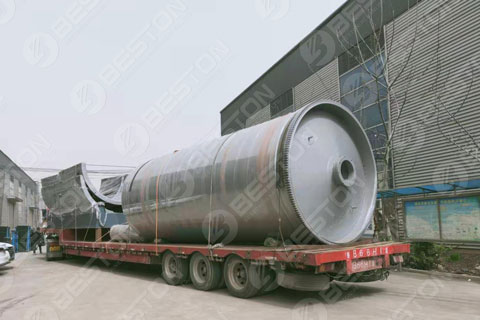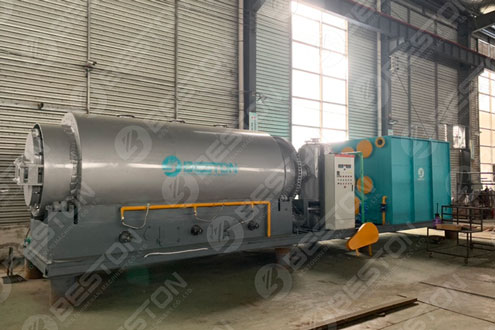A tyre pyrolysis plant uses an industrial process that converts used tyres into liquid fuel, such as oils and gases. There are two types of processes utilized: direct and indirect. In a direct process, the rubber is heated in an oxygen-free environment at 300 to 600 °C for several hours, causing the hydrocarbon chains within the tyre to break down into smaller pieces. A byproduct of this reaction is carbon black, which can be further refined and blended with diesel or gasoline, depending on the kind of waste tyre pyrolysis plant you want to run using it (you could run your car on it too!). An indirect process involves heating tyres until they produce coke (a high-grade carbon). Then coke is heated further to produce the fuel.

In both cases, oil and gas are the main products of pyrolysis. Oil from the pyrolysis process can be refined into various highly desirable petroleum products, such as aviation turbine fuel (ATF), organic solvents, and base oils. The gas byproduct from a Beston continuous pyrolysis plant can also be used as a substitute for natural gas in furnaces or boilers that require high temperatures for industrial processes such as glass melting or smelting metal ores.
One of the major advantages of using tyre derived fuel instead of traditional fossil fuels is that there is no shortage of a supply source. There are about 100 million tonnes of used tyres generated per year in the world. In addition, another advantage is the reduction of carbon dioxide released into the atmosphere compared to using traditional fuels like petrol or diesel because no new fossil fuel is needed.
Tyres are an excellent source of hydrocarbons because they contain over 70% carbon by weight. Additionally, tyres contain up to 50% water which significantly reduces overall energy production capacity. See the latest technology https://bestonmachinery.com/pyrolysis-plant/technology/.
However, there are three major issues concerning tyre pyrolysis: separation of liquids from solids in the tyres, removal of steel wire from the pyrolysis oil product, and generating heat within a tyre pyrolysis plant to reach high enough temperatures.

Still, even with those challenges to overcome, tyre pyrolysis remains a much more viable way to deal with used tyres than landfill or incineration. The tyre pyrolysis technology converts waste tires into multiple valuable products like fuel oil, pet coke, carbon black, etc. It offers an alternative for landfills, which only accept lightweight materials such as paper or plastic wastes. With landfills, also, there is no potential for producing more energy. It is also a preferable alternative to incineration, which puts harmful byproducts into the atmosphere.
In conclusion, even though tyre pyrolysis does have its unique challenges to overcome, those are worth it when you examine the environmental benefits that are gained as a result of transforming the used tyres into valuable products like gas and oil, as opposed to merely burying them or burning them. View Beston Technology. It is the advanced in the world.